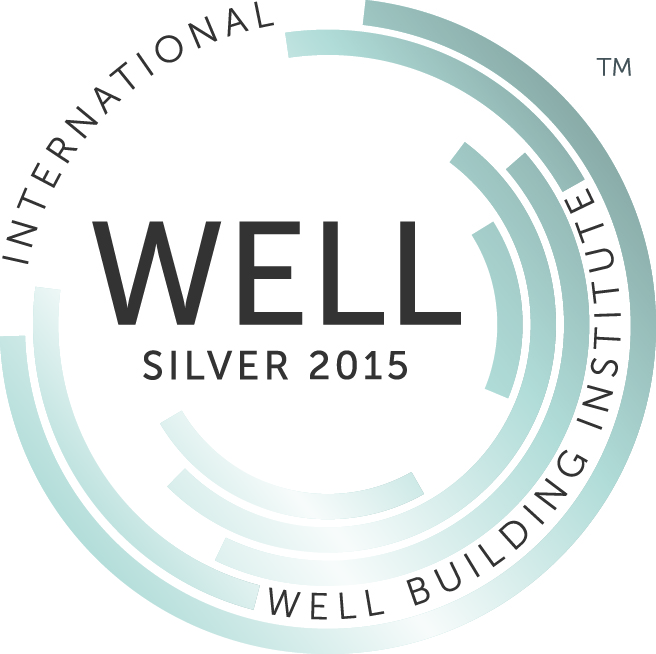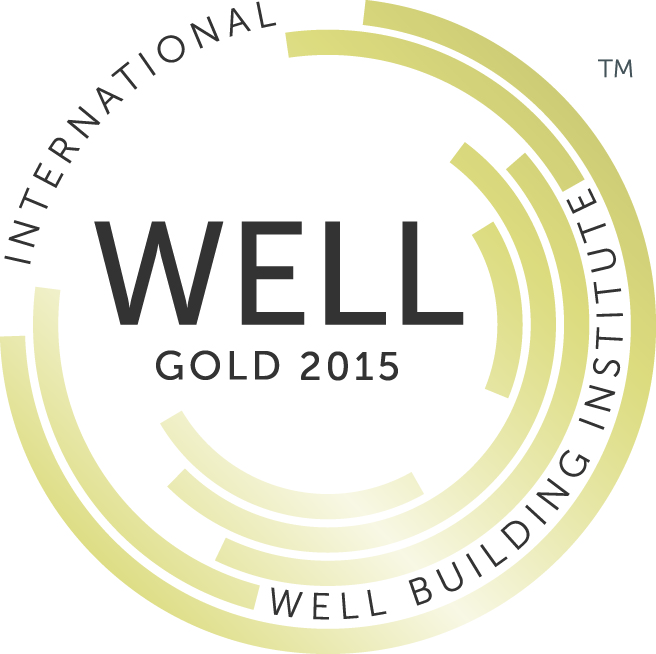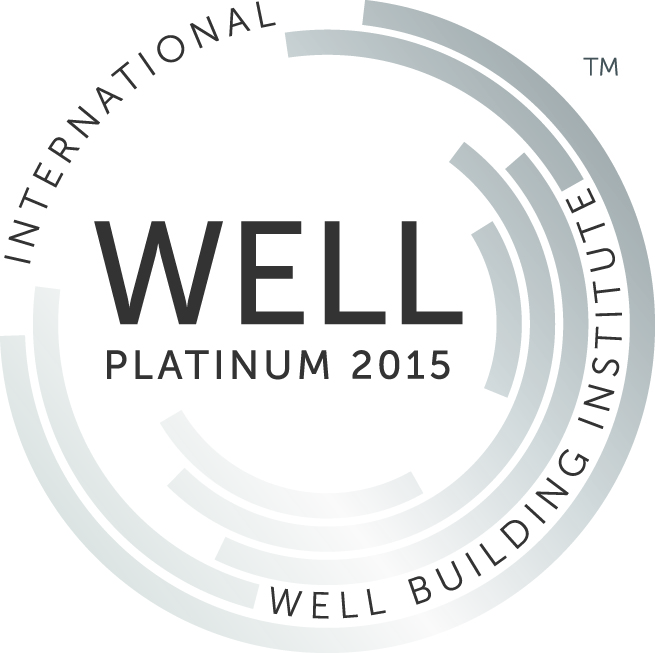Certification
WELL Certification is achieved when projects demonstrate all Preconditions. Higher certification levels above Silver can be achieved by pursuing Optimization Features. Because health and wellness objectives vary from one building to the next, WELL provides flexibility when selecting Features that best suit the project owner’s goals.
Silver level certification is achieved by meeting 100 percent of the WELL Preconditions applicable to the project Type in all Concepts.
Gold level certification is achieved by meeting all of the WELL Preconditions, as well as 40 percent or more of the Optimization Features.
Platinum level certification is achieved by meeting all of the WELL Preconditions, as well as 80 percent or more of the Optimization Features.
Process
Download the GuidebookThe WELL certification process involves five steps: 
1. Registration
WELL Certification begins with registration through WELL Online. Once a project is registered through WELL Online, registration includes: access to WELL Online, an orientation webinar for the project team, and access to our project helpdesk.
Once registered, GBCI (which provides third-party certification for WELL) will assign a WELL Performance Testing Agent to the project. The WELL Performance Testing Agent is integral to the certification process. He/she will be able to help answer questions about certification, but more importantly will be the person who reviews project documentation and performs all onsite performance testing and visual inspections that are part of Performance Verification.
2. Documentation Requirements
WELL Certification requires documentation as well as a series of onsite performance tests known as Performance Verification prior to final certification review.
Documentation requirements include annotated project documents and drawings in addition to letters of assurance from the project team. Projects must submit all required documentation before Performance Verification can begin.
3. Performance Verification
Performance Verification ensures that the building is performing as intended and can help to maintain and improve its performance over time. This consists of a site visit, during which the WELL Performance Testing Agent completes visual inspections to verify documentation, and performance tests to evaluate air and water quality, noise, light and temperature levels, and other environmental parameters applicable to WELL requirements.
Upon completion of Performance Verification, the project receives a WELL Report that provides a Feature-by-Feature assessment of WELL requirements. If the results of the Performance Verification process demonstrate that the project meets all performance requirements, the project team is ready to submit for final certification. If the project does not meet all WELL Feature requirements, project teams will have the opportunity to make improvements.
4. Certification
WELL Certification recognizes that the project has successfully documented compliance with all features and passed Performance Verification. Upon achievement of WELL Certification, the project will receive the official award letter, a WELL Certification plaque, other relevant documents, and sample marketing materials to help promote the WELL Certified™ building.
5. Recertification and Documentation Submission
Recertification ensures that the project maintains the same high level of design, maintenance, and operations over time.
For New and Existing Buildings and New and Existing Interiors projects, WELL Certification is valid for three years from the date of the certification award letter. In order to maintain certification after that time, a project must apply for recertification and performance verification to determine that the building continues to perform to the WELL Building Standard.
WELL Core and Shell certified projects provide healthy and productive amenity spaces to their occupants and enable tenants to pursue WELL Certification for their interior spaces. WELL Core and Shell projects may recertify to verify the ongoing performance of amenity spaces and core elements of the building. After projects certify through Core and Shell, the interior spaces are primed for WELL for New and Existing Interiors Certification.
Alternative Adherence Path
WELL welcomes projects to meet feature requirements through innovative, alternate strategies, which can be proposed through an alternative adherence path (AAP) submission. An AAP is a formal request submitted by a project to receive technical guidance and approval for an alternative strategy to comply with a WELL feature, prior to full documentation review.
- Each project receives three AAPs at no additional cost. Subsequent AAPs are subject to a fee and there is no limit on the number of AAPs that can be submitted per project. (Contact the project's WELL Performance Testing Agent or technical@wellcertified.com for more information on AAP fees.)
- AAPs may be submitted before or after project registration.
- Each AAP applies only to the project under which it was submitted and may not be applied to other projects.
- If IWBI determines that an AAP has a broader application across multiple projects, the AAP rulings may be made public or may influence the development of the WELL program.
Fees
IWBI is currently offering WELL pricing to reward early adopters and leaders of the healthy building movement. To take advantage of this special pricing, we encourage projects to register before June 30, 2017 and continue the momentum of the healthy building movement.
You can either register a project or register your entire portfolio. The higher the square footage, the more flexibility is afforded on pricing, providing economies of scale. We have also given you the flexibility to include projects of different project types. We encourage you to leverage our new easy-to-use pricing calculator, create an estimate, register your project with WELL Online and get WELL Certified™!



